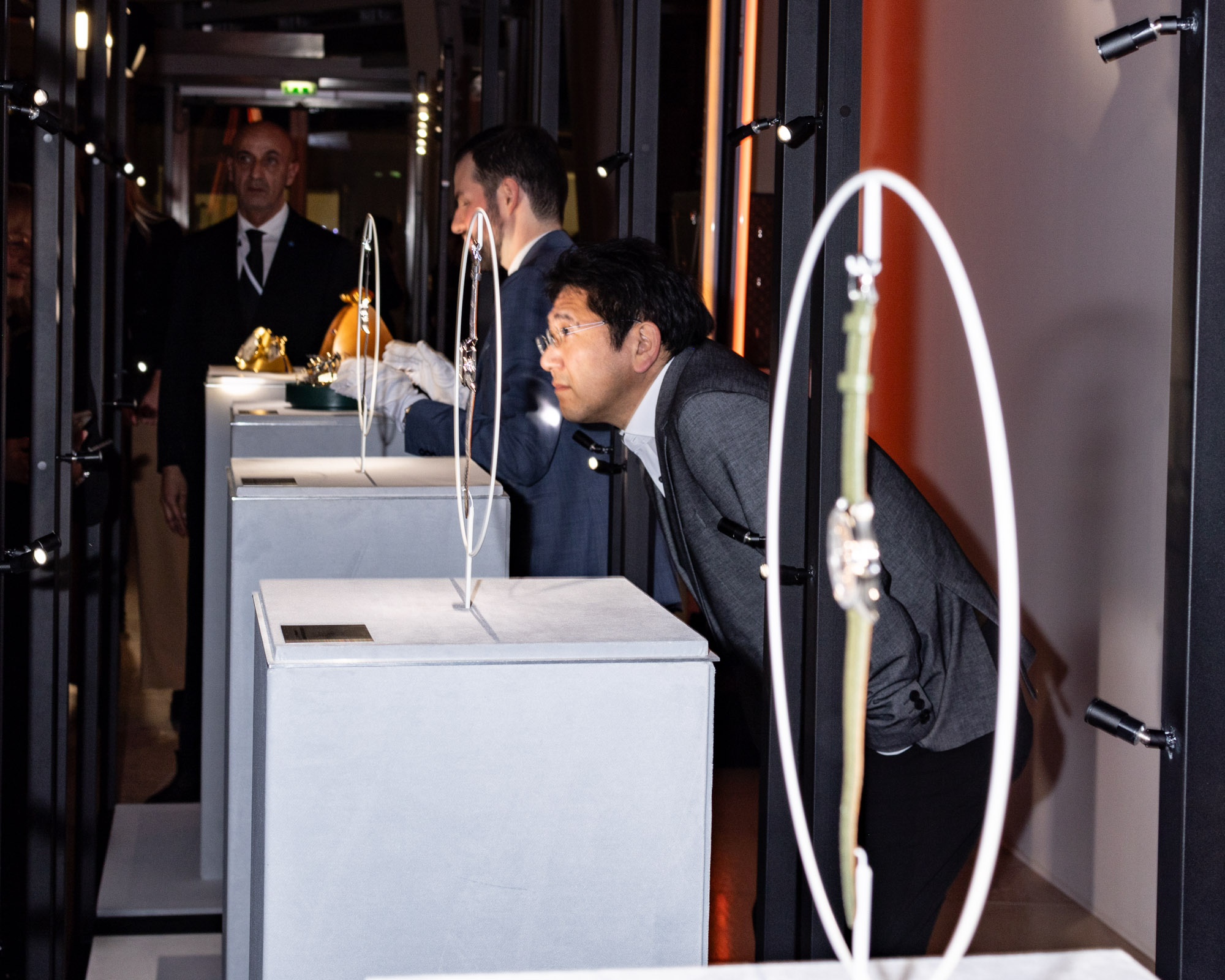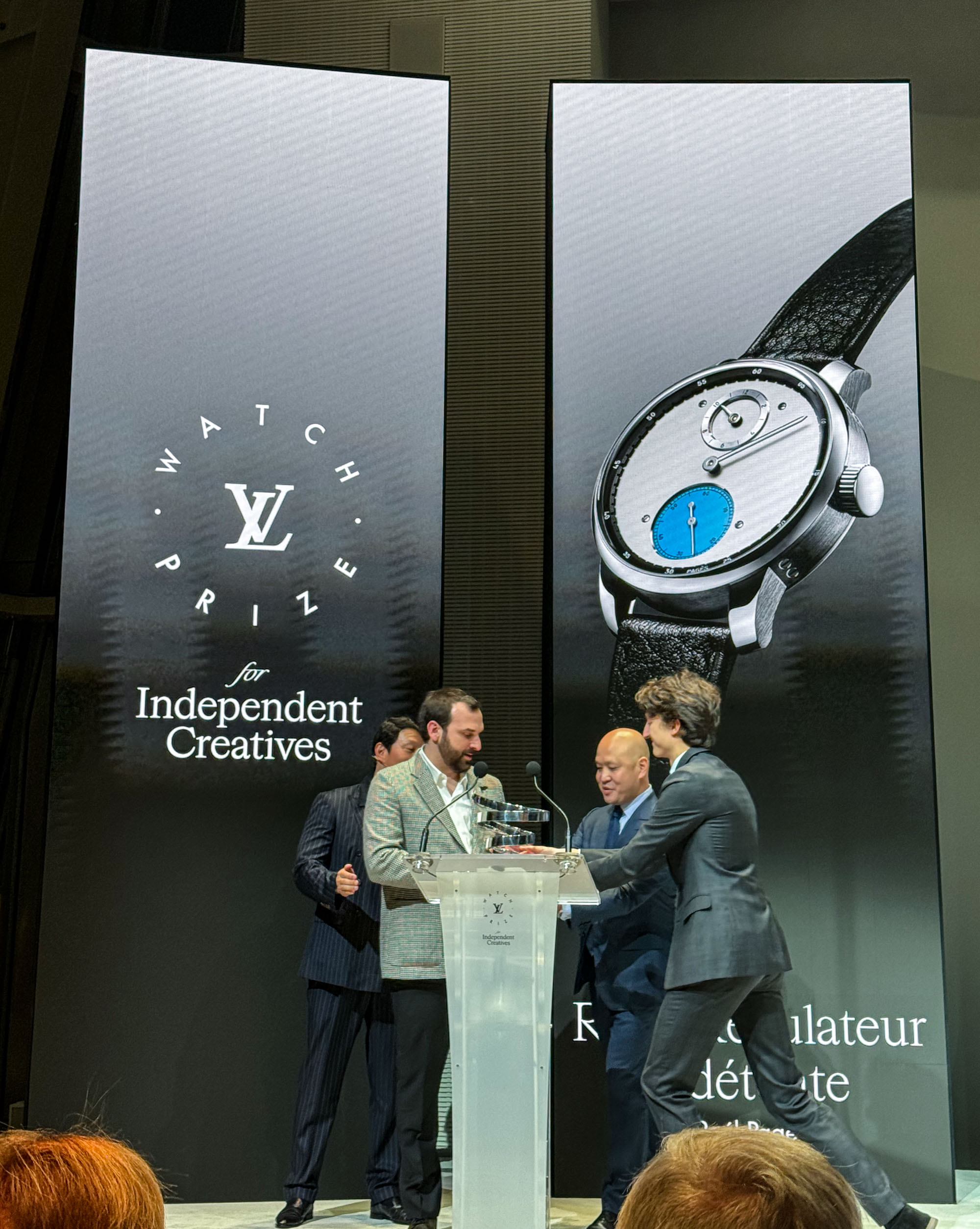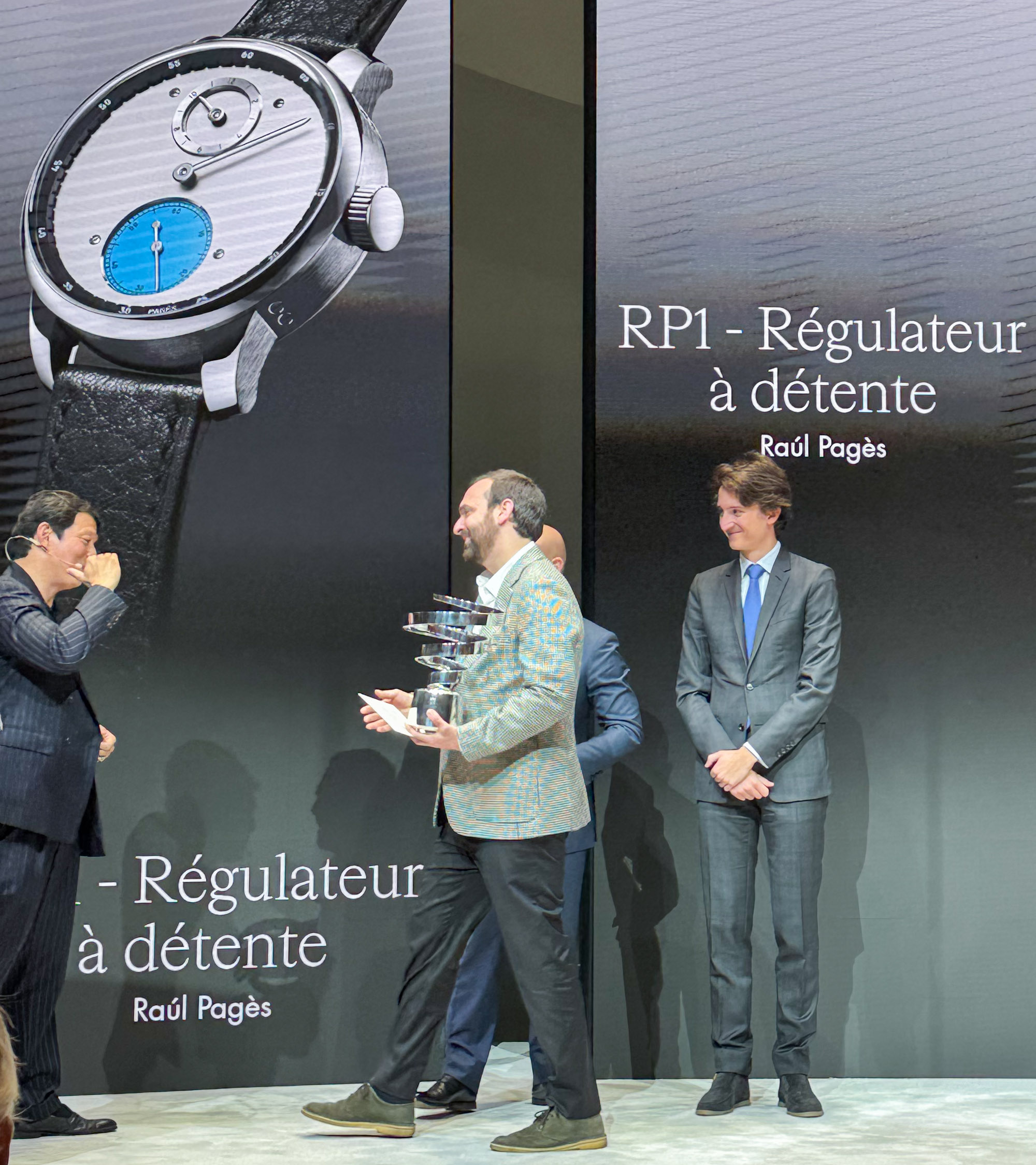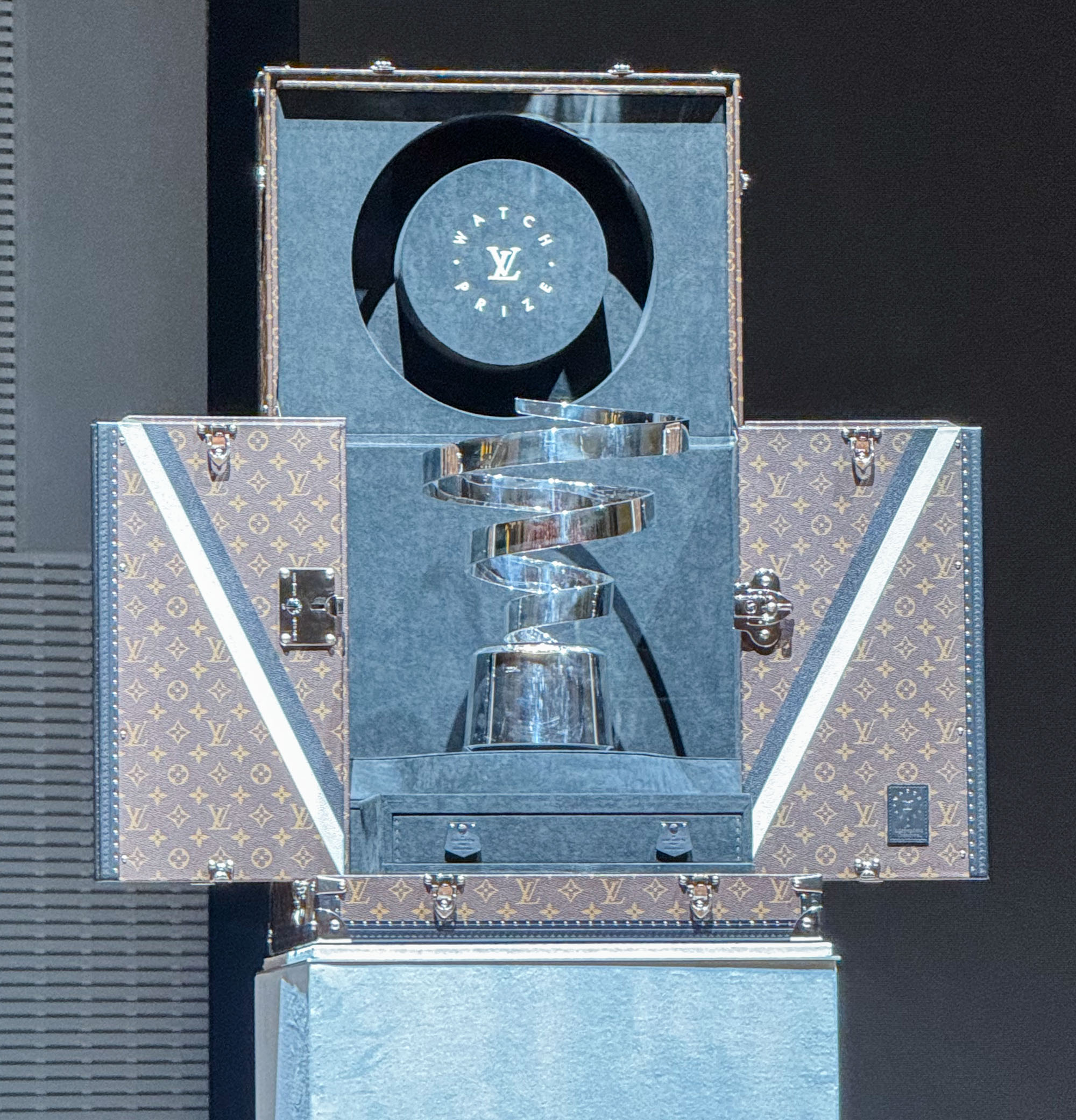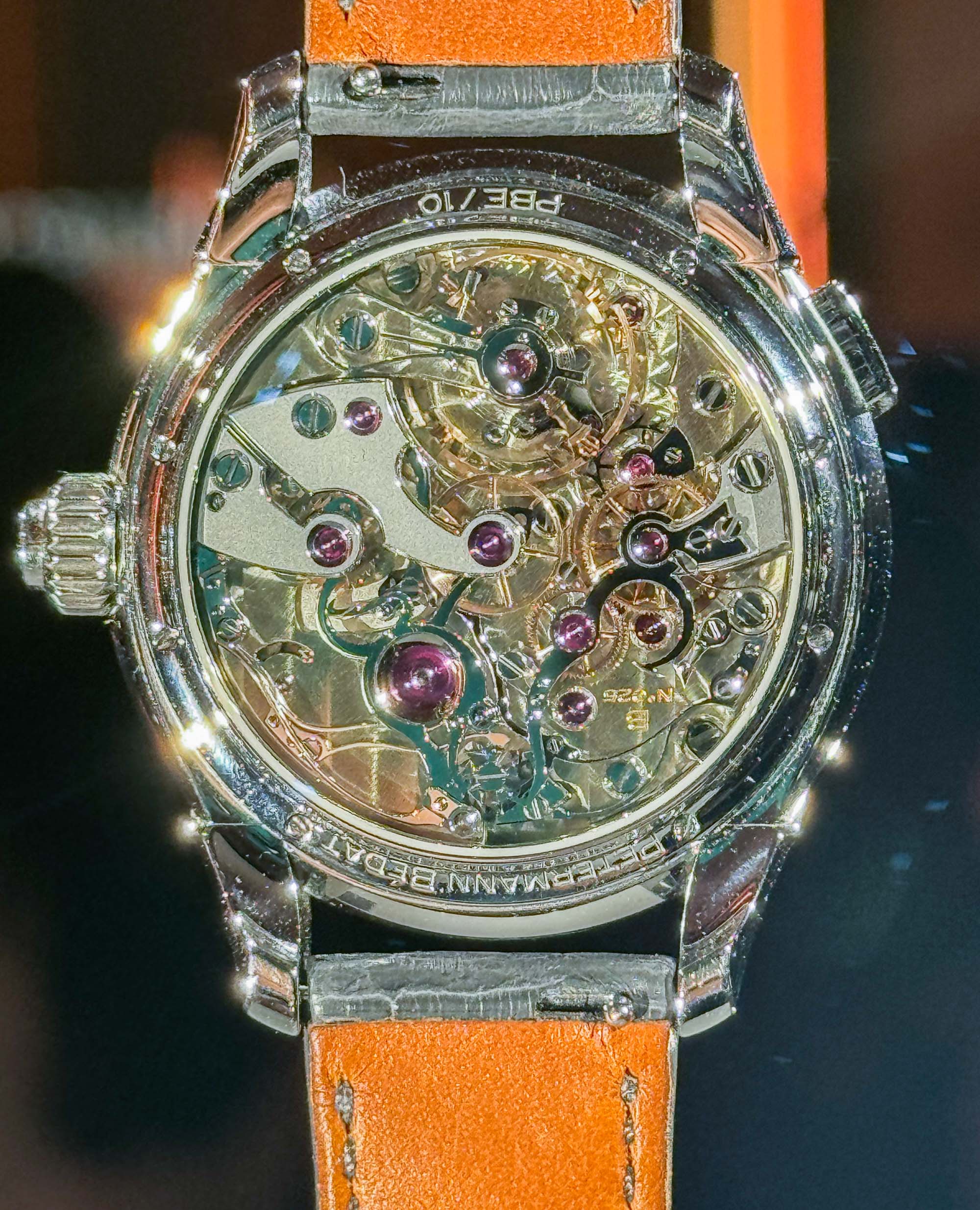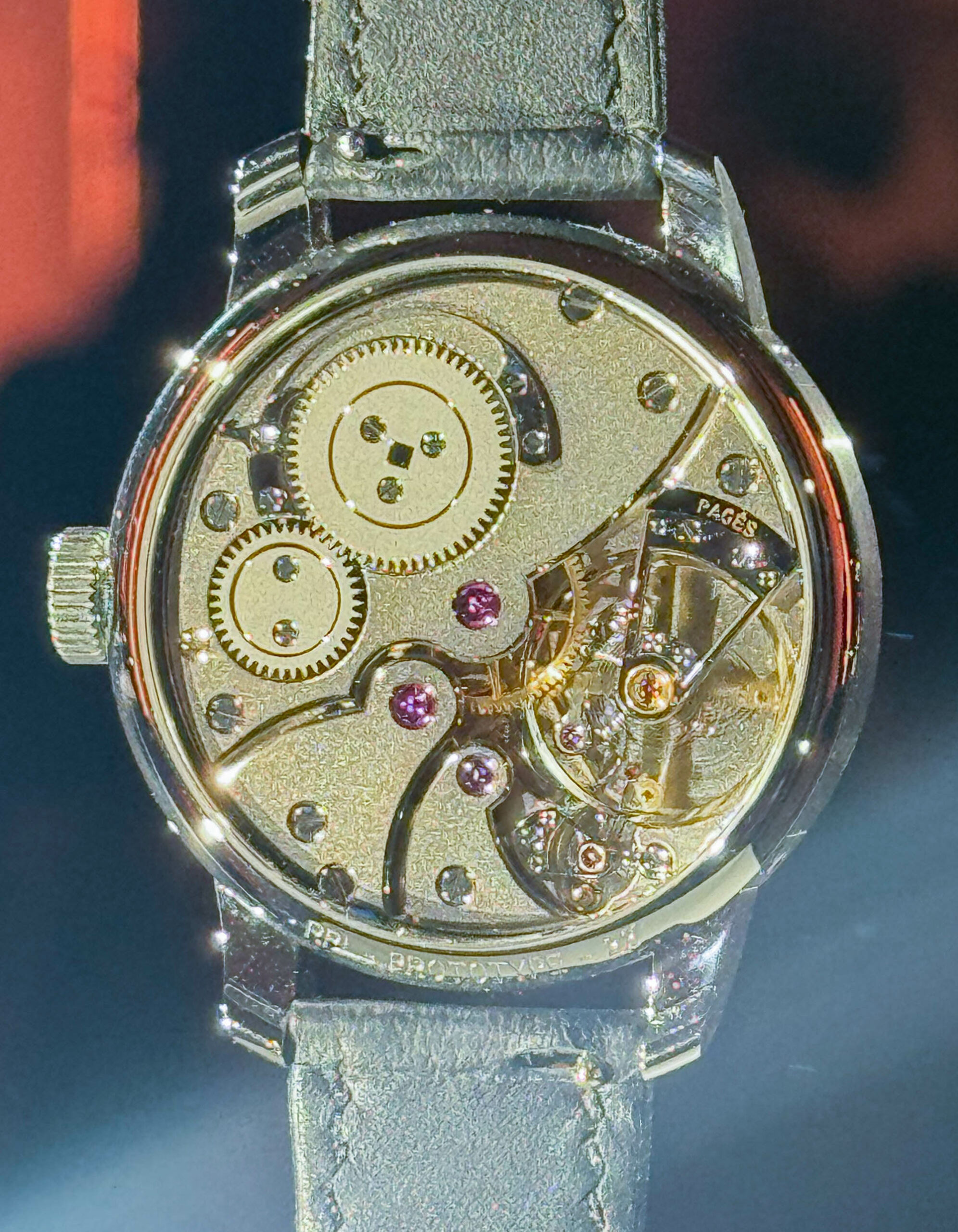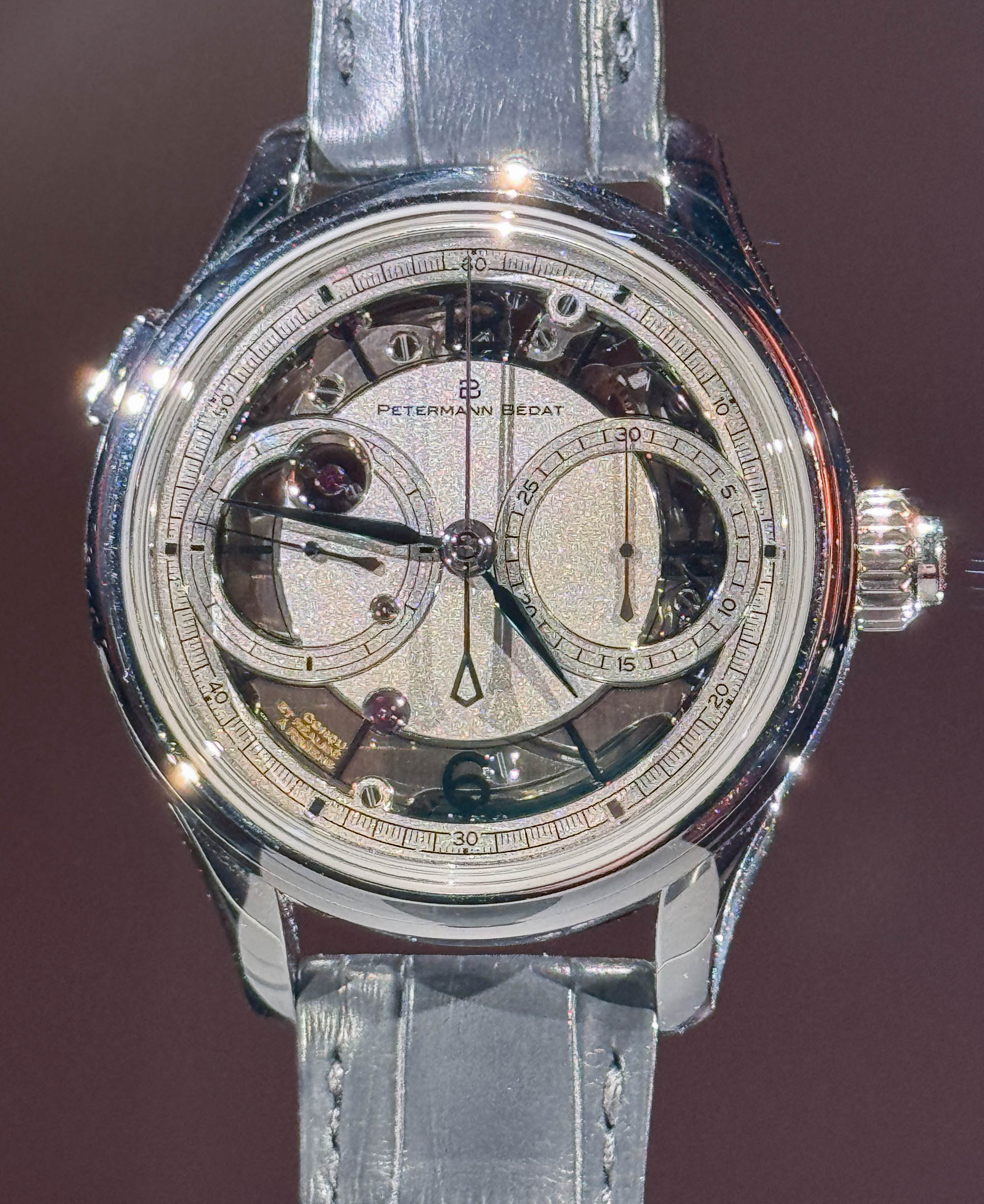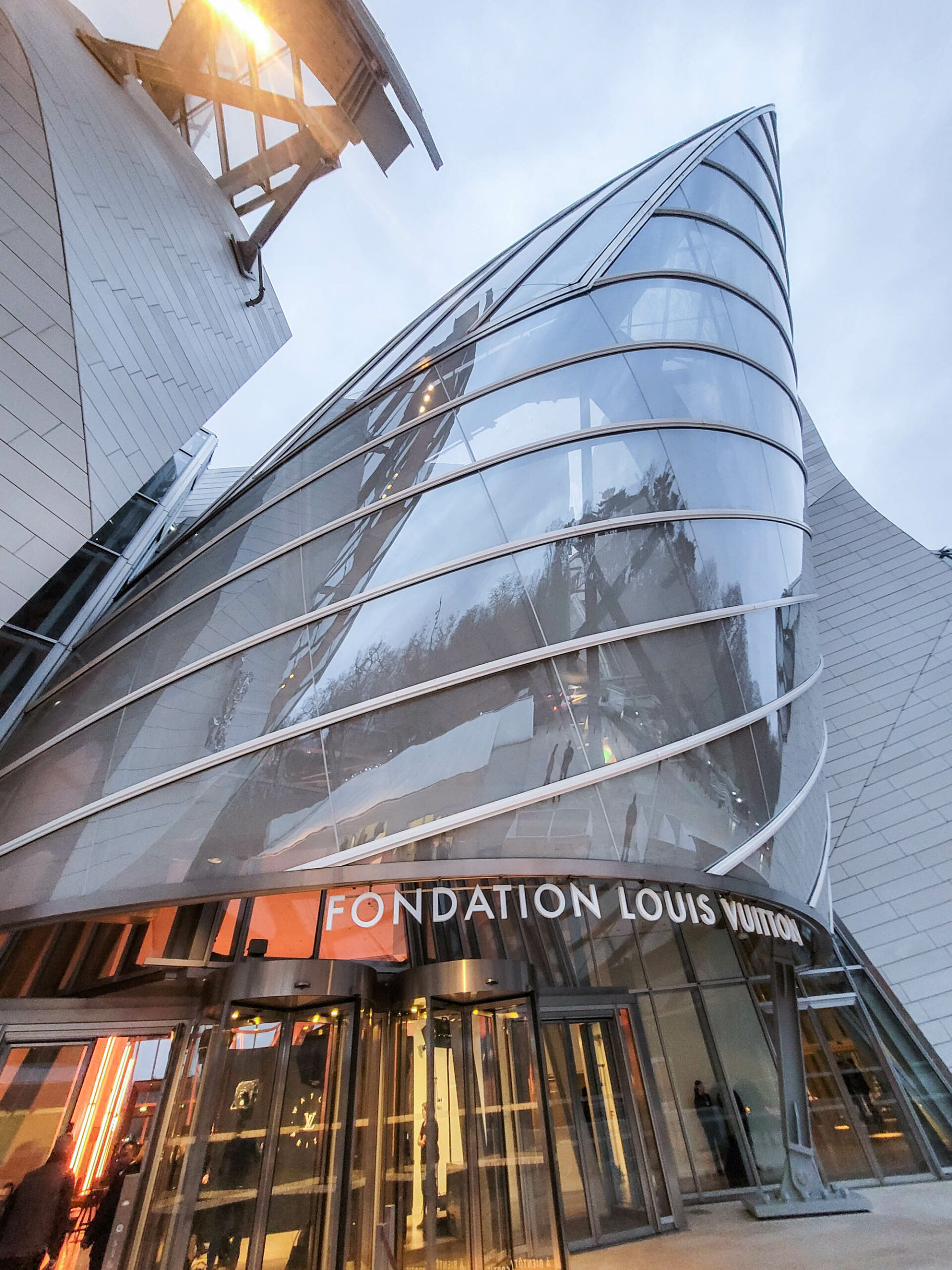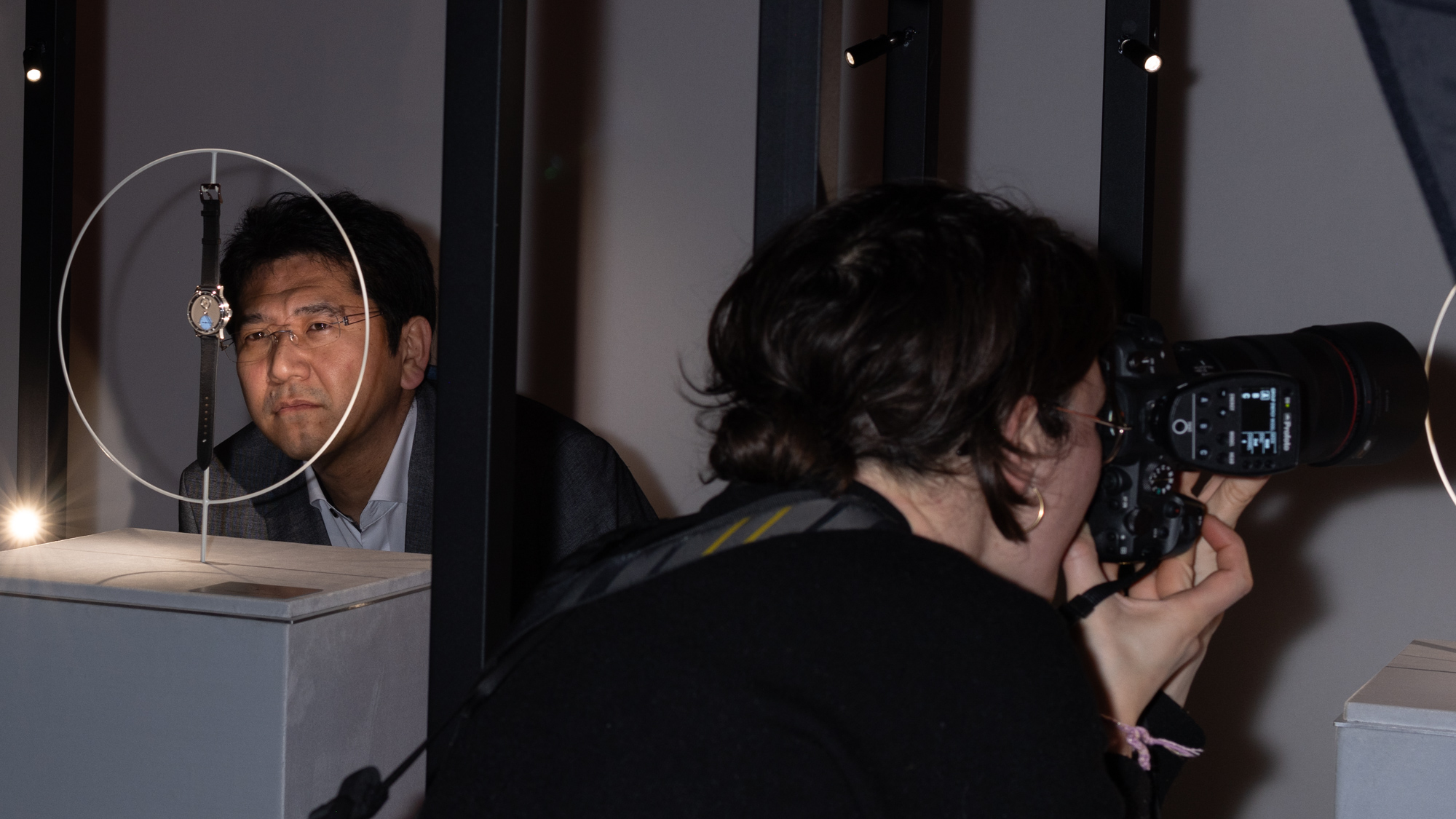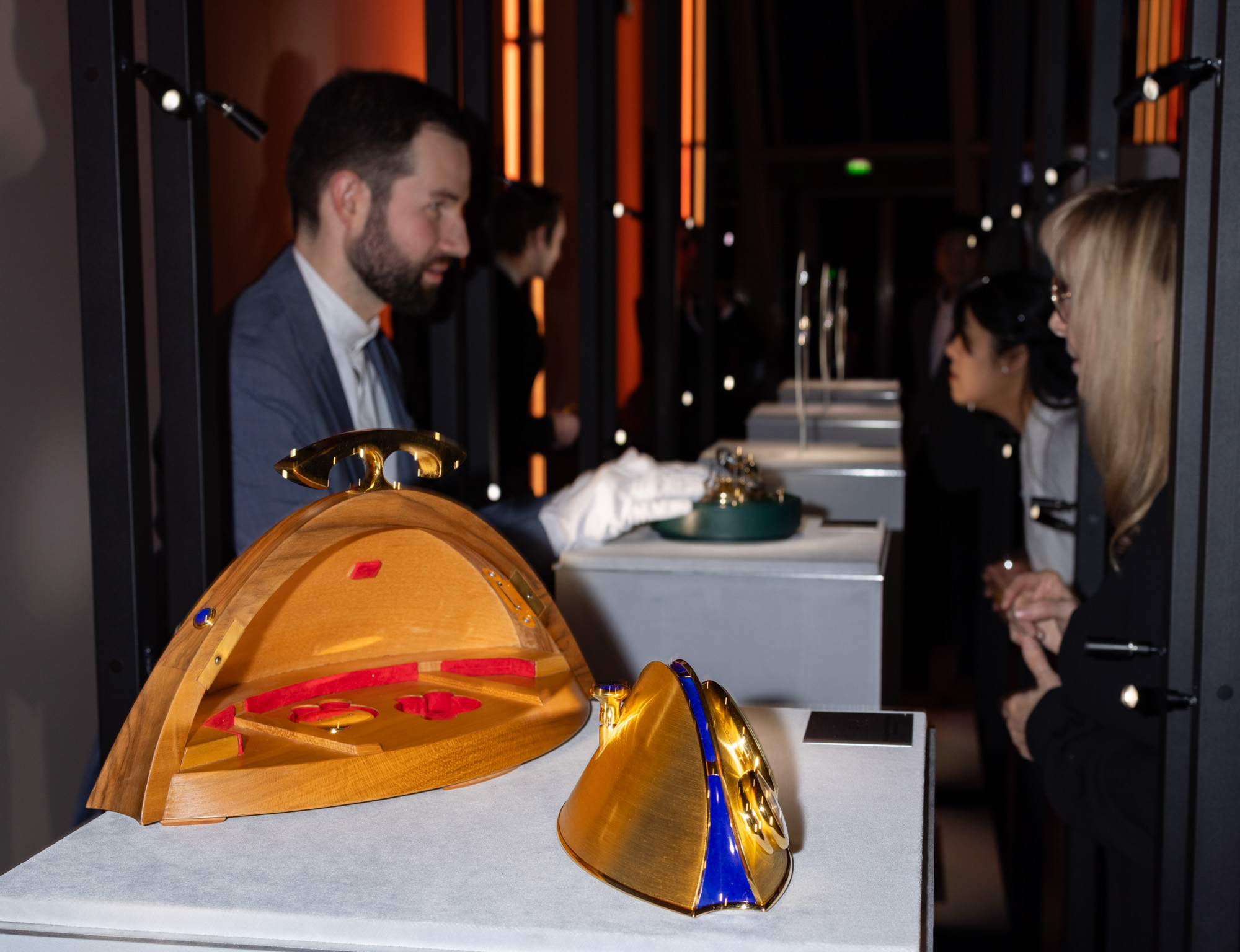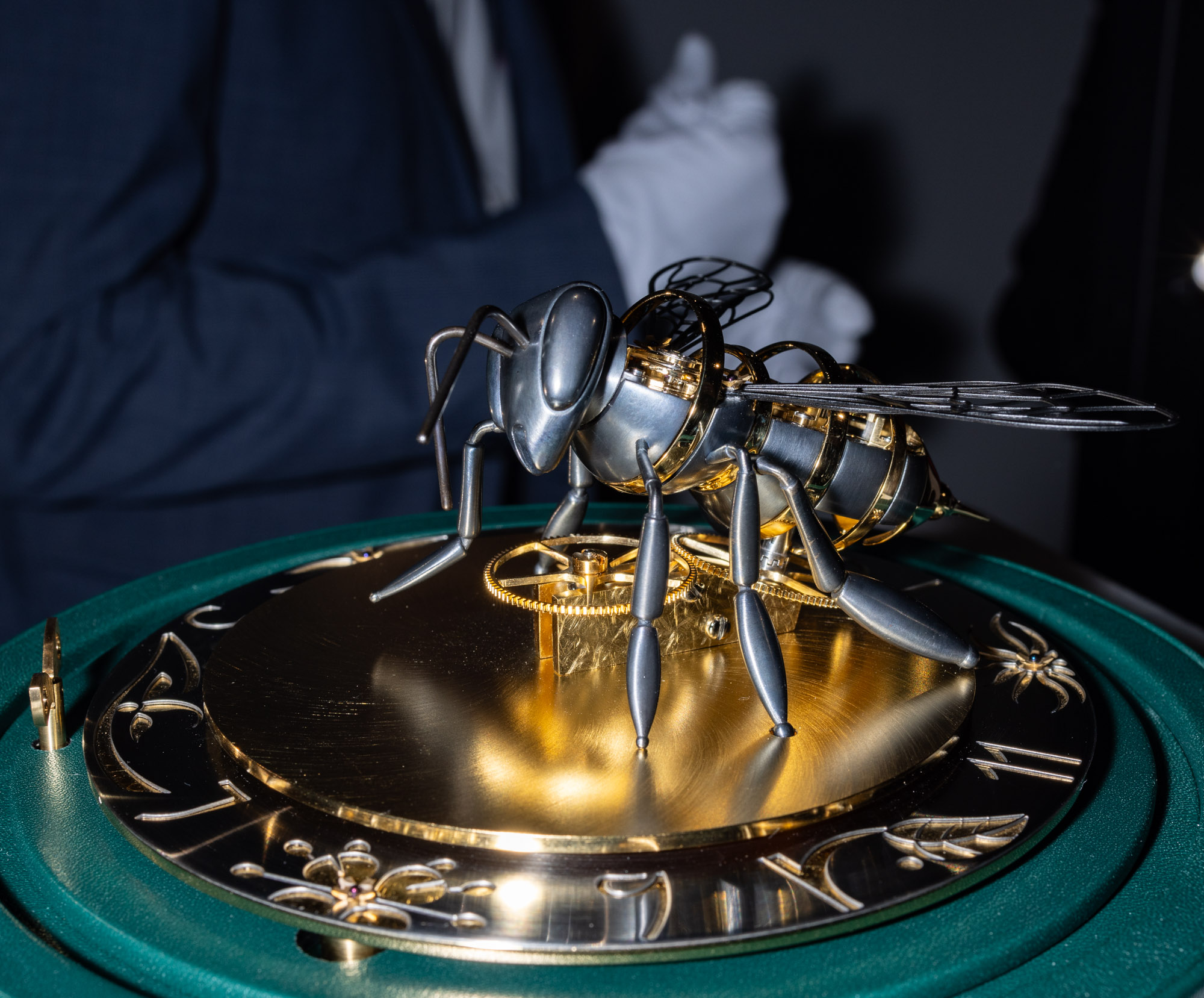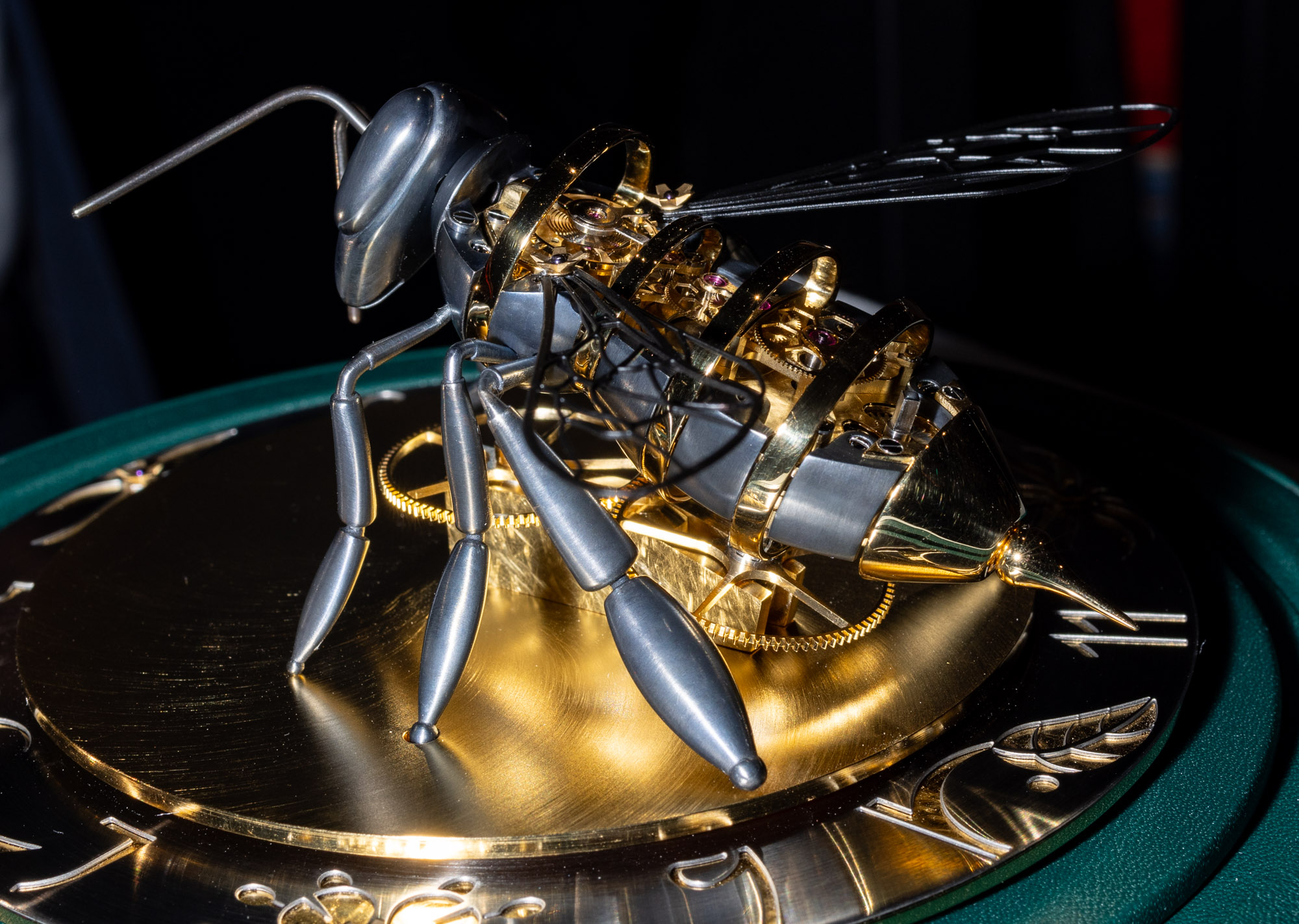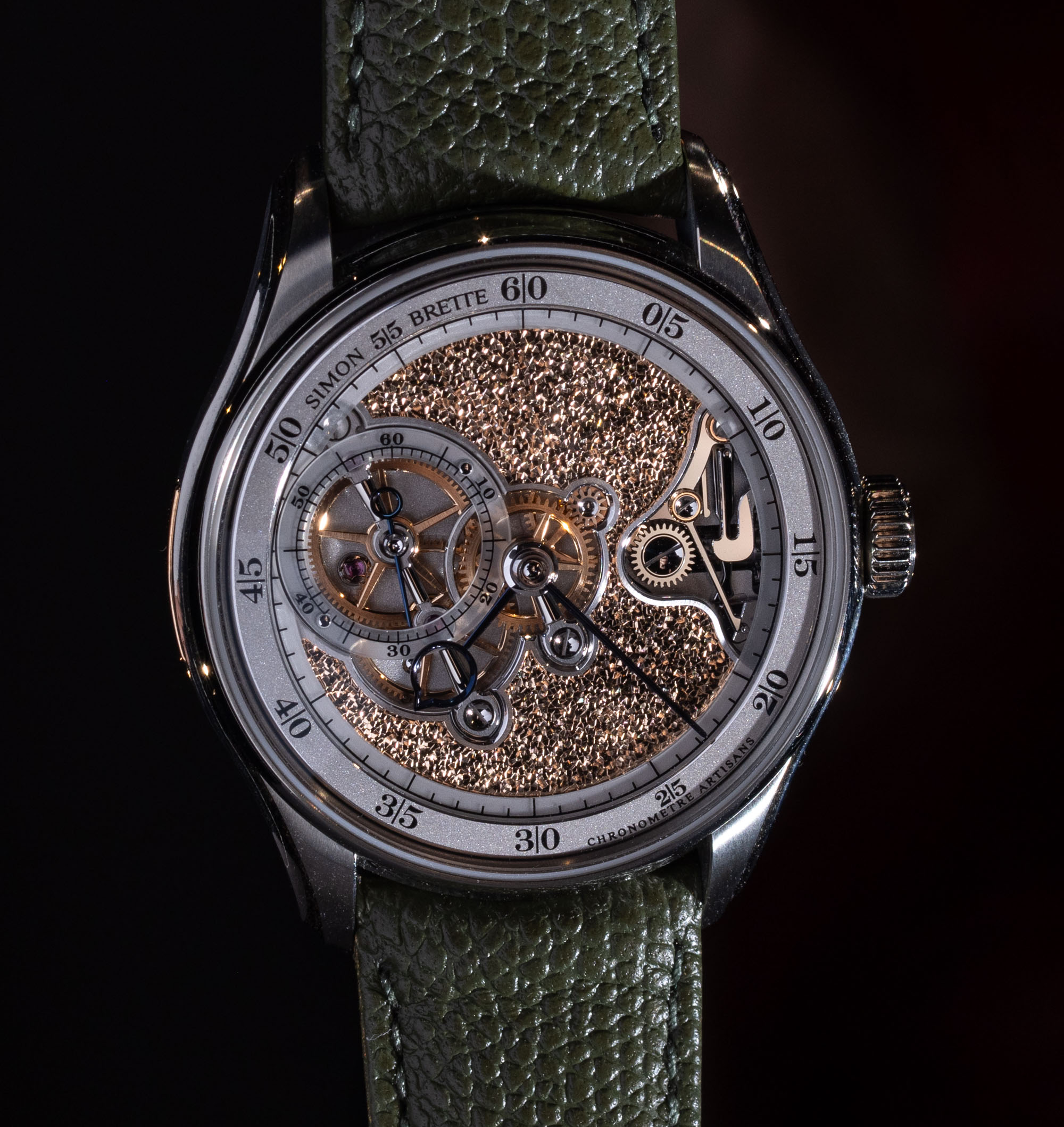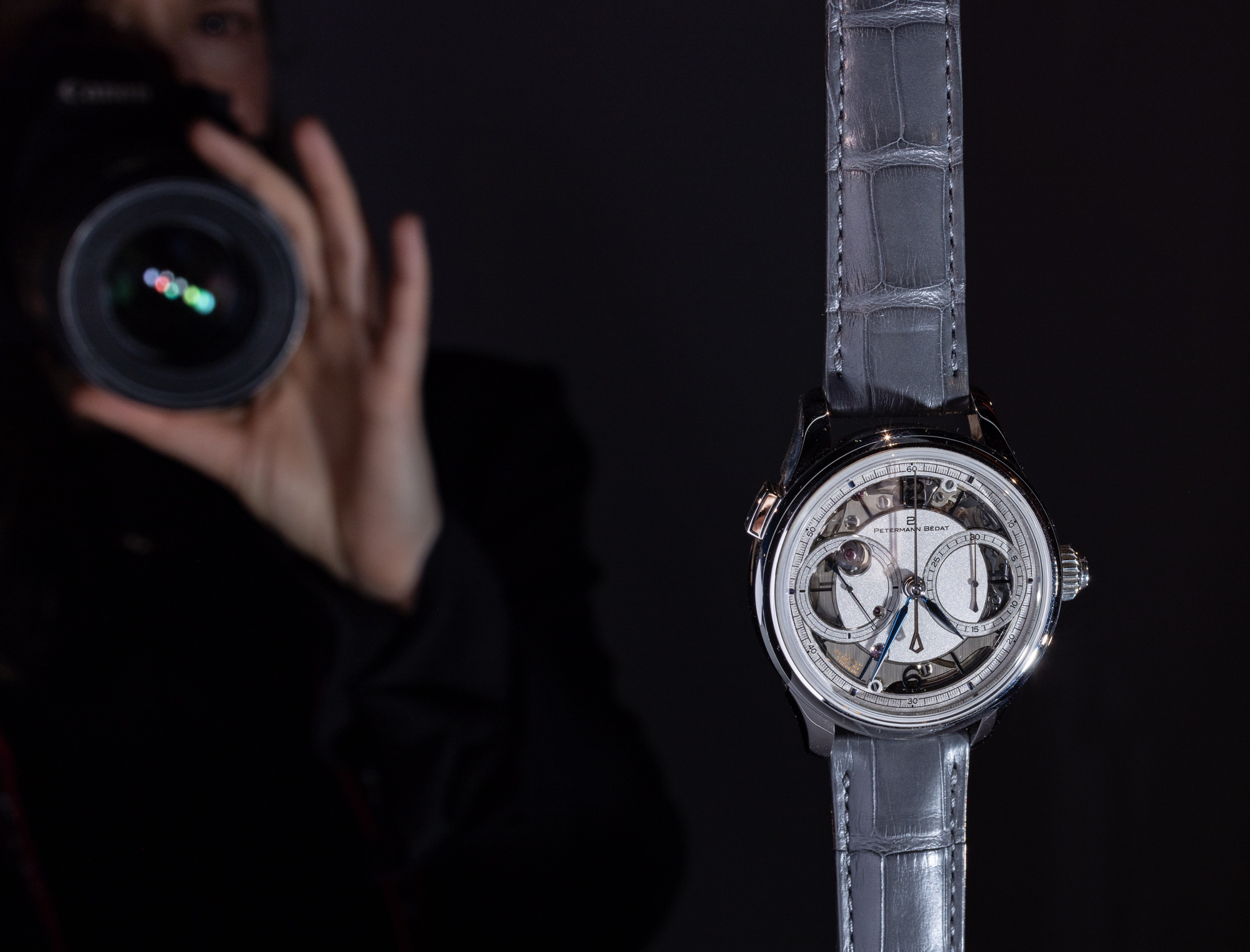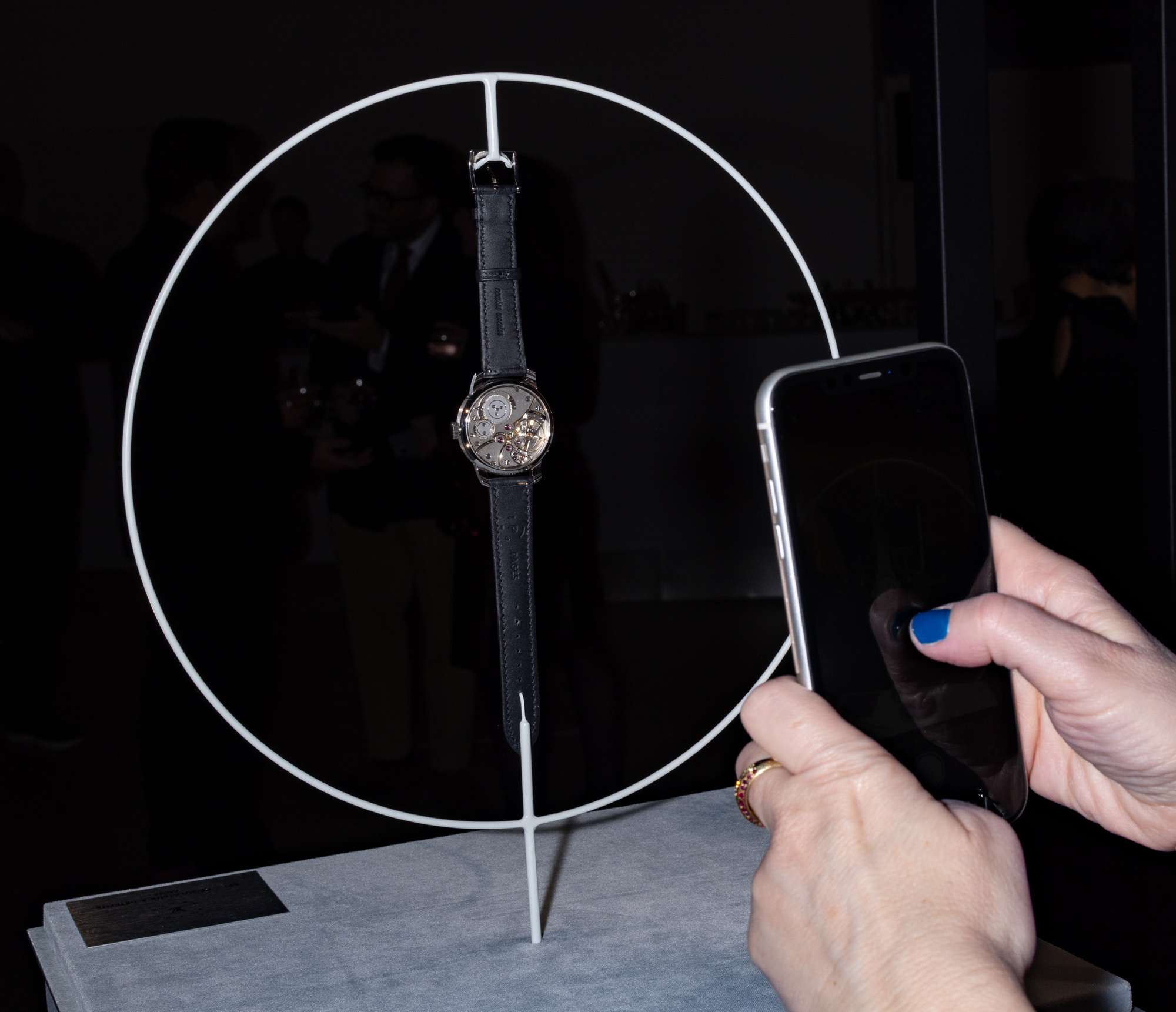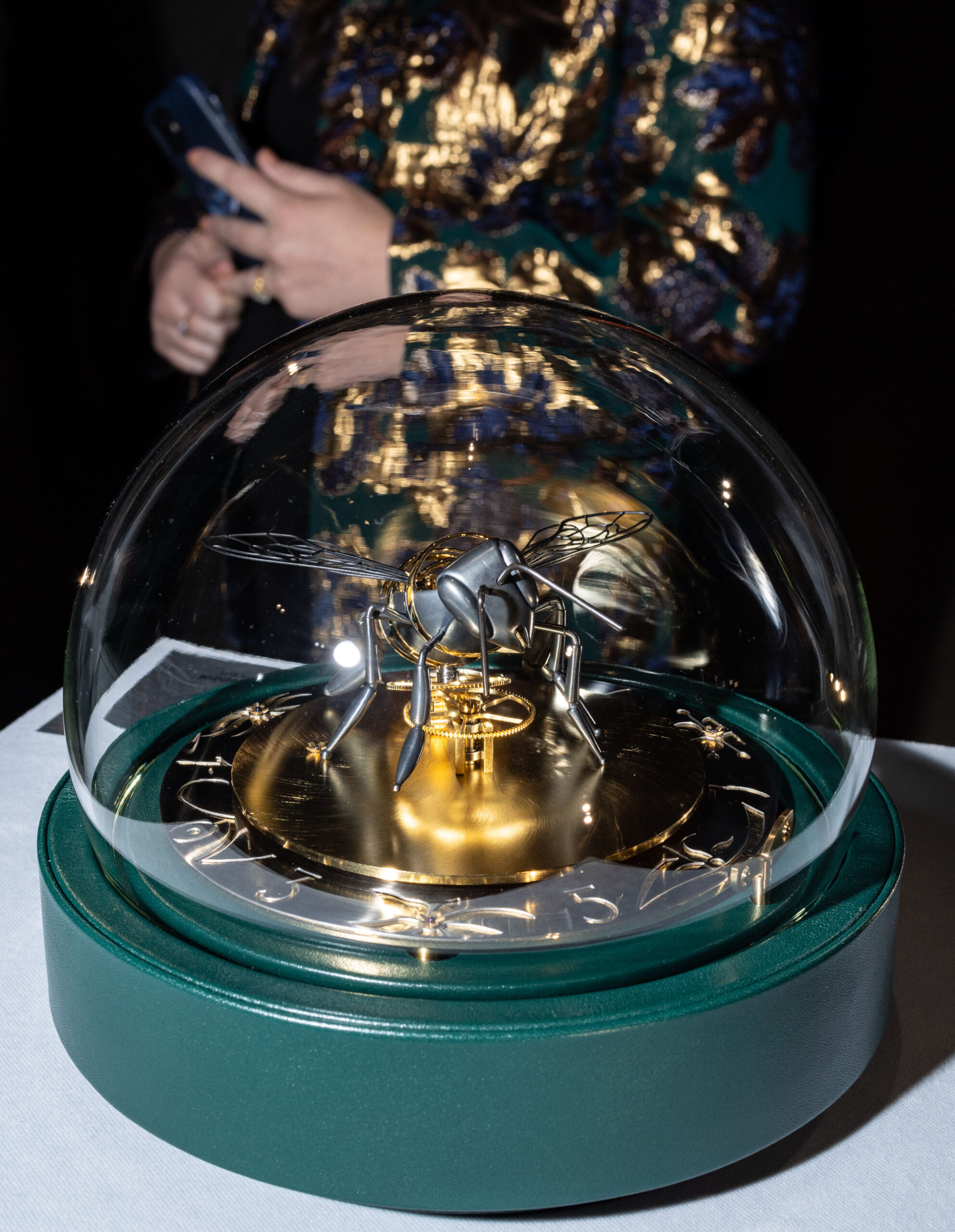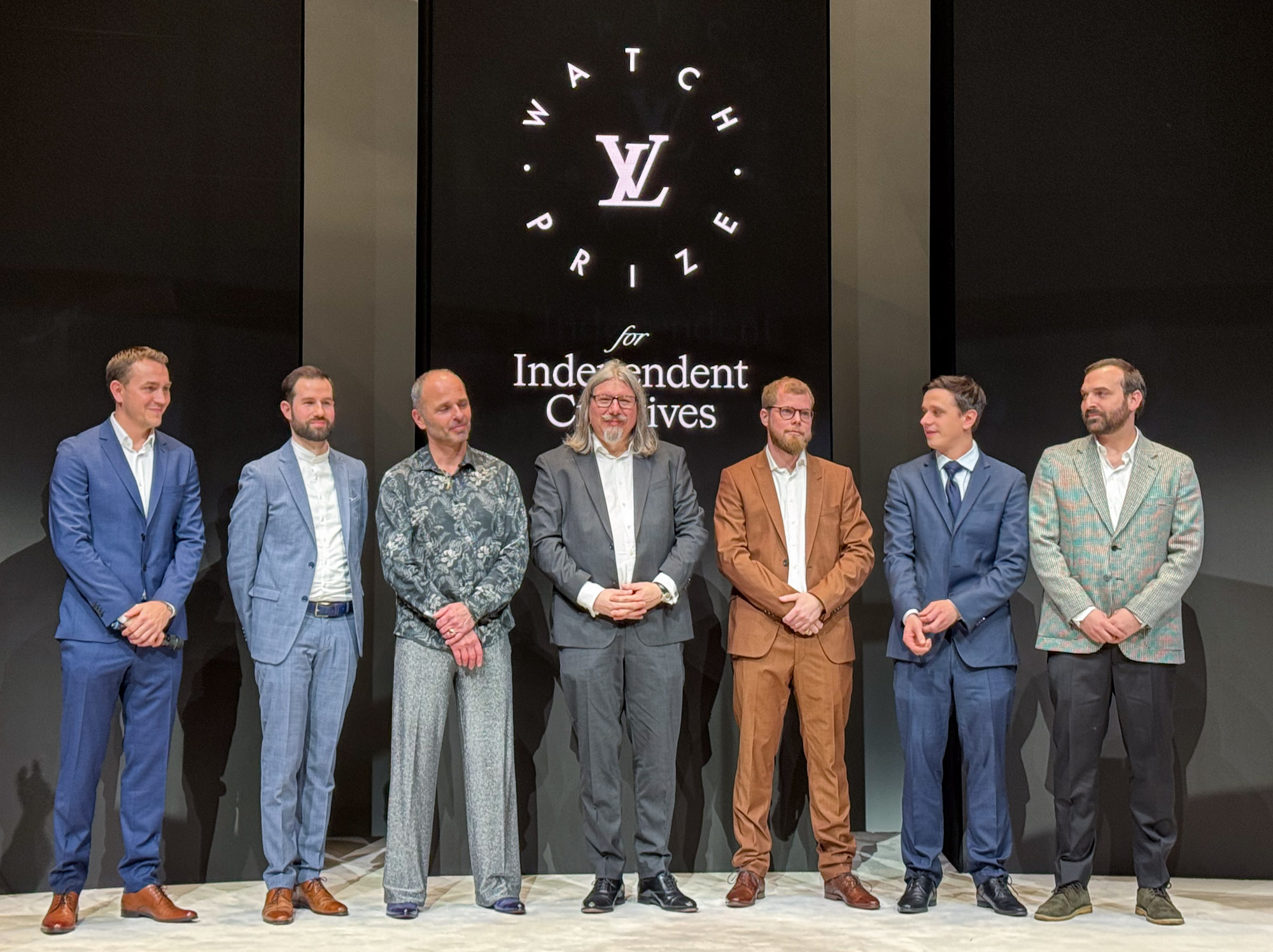
In Paris at the acclaimed Louis Vuitton Fondation building, the winner of the first-ever Louis Vuitton Watch Prize was recently announced in front of an audience that was excited and primed to hear the results for months. For over a year, Louis Vuitton’s watch division, under its leader Jean Arnault, has been working on launching an executing and new (and somewhat amorphous) initiative designed to highlight what many people believe is the best thing about today’s traditional watch industry. That “thing” is the also concept of “independent watchmaking,” a collective term that vaguely includes a bevy of unaffiliated solo or small-group artisans, watchmakers, and craftspeople who are often seen as the creative inspiration for trends and themes that are eventually celebrated in slightly more mainstream luxury timepiece products. As a curator (and maker) of beautiful, desirable objects, Louis Vuitton intends to benefit from this exercise by introducing its comparatively massive audience to the world of artisanal watchmaking through its refined lens. By fomenting desire for rare luxuries of all types, Louis Vuitton as a brand is strengthened by in turn cultivating desire for its products. Part of the brilliance of the company today is how it builds objects as well as demand for a world marketplace.
To many people, Jean Arnault’s original interest in highlighting unaffiliated (to Louis Vuitton or parent company LVMH) watchmakers and designers seemed strange at first. Why such an elaborate and expensive exercise that does not immediately link to something you can buy from Louis Vuitton? Critics are at least correct that the Louis Vuitton Watch Prize affair was (and will continue to be) elaborate and expensive. However, they fail in their argument that the exercise is not valuable for Louis Vuitton. Whether by design or beneficial circumstances, the Louis Vuitton Watch Prize initiative has catapulted interest among the most serious watch enthusiasts for what Louis Vuitton is doing, especially in collaboration with its La Fabrique du Temps facility in Geneva. Arnault has clarified a greater goal about developing Louis Vuitton’s relatively boutique (compared to the larger organization) watch business into one that produces products able to impress Louis Vuitton’s VIP clientele as much as it does hard-to-please watch collectors and opinion leaders. That isn’t an overnight effort and will require multiple initiatives and sustained momentum. Jean Arnault gives all indications that he is committed to this multi-year process.
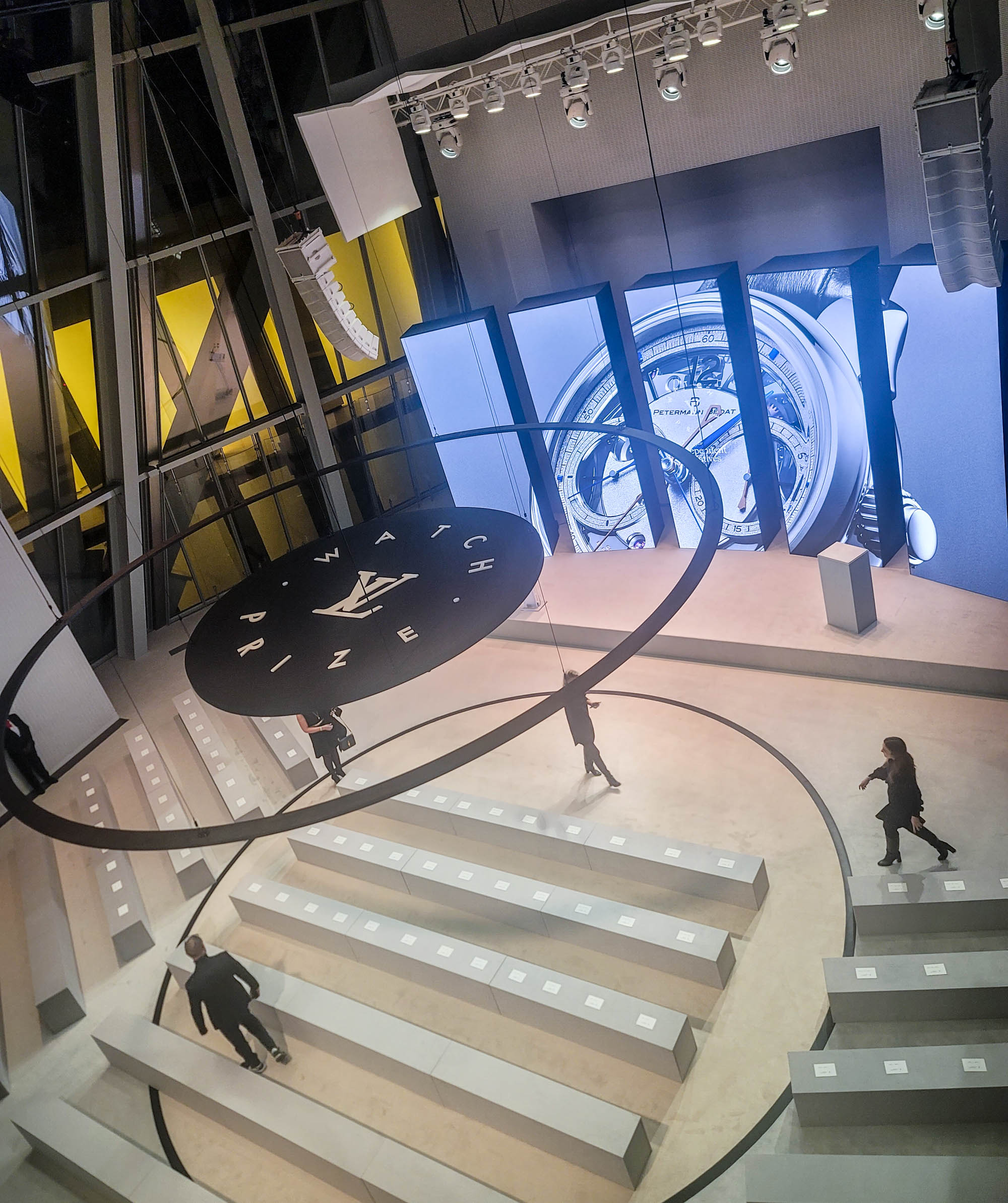
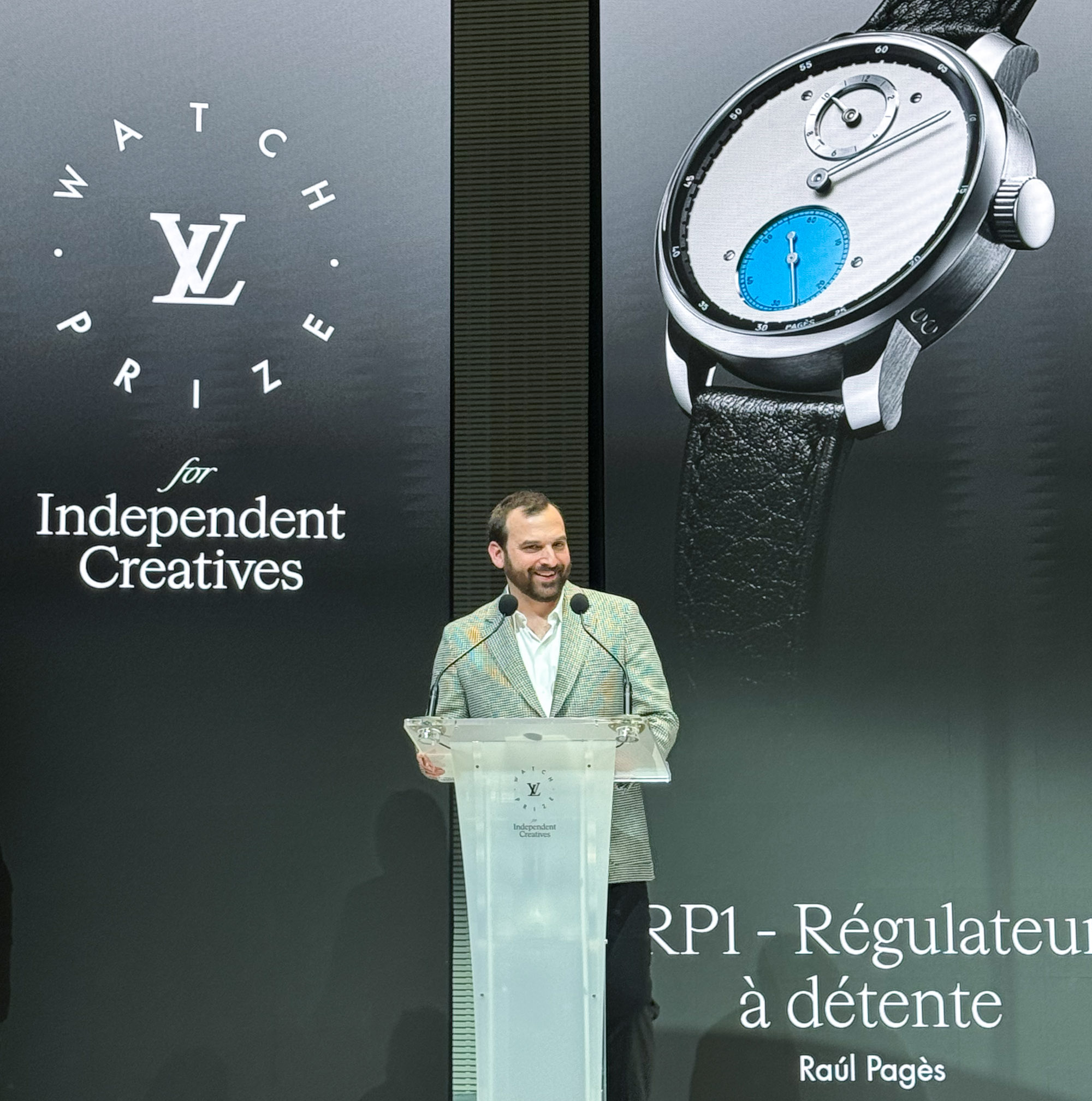
The prototype for the Louis Vuitton Watch Prize is the organization’s LVMH Prize intended for fashion designers. While the concept has been heavily modified for the world of watchmaking, the principle is the same: Use a hand-selected committee of experts around the world to find and encourage talent to apply for a chance to win. Instead of an overly cash-focused prize, the winner receives some money in addition to “mentorship” by Louis Vuitton and its robust network. The goal is to highlight lesser-known or up-and-coming talent, as well as to see how their work and ideas can be amplified with help from the strongest luxury group in the world. Louis Vuitton had some difficulty in communicating the essence of the mentorship, merely because the outcome of this “choose your own adventure” relationship with Louis Vuitton’s La Fabrique du Temps facility in Geneva would be determined by the winner’s unique situation. We now know that the winner is Raul Pages, who lives close enough to La Fabrique du Temps that he can personally benefit from the brand’s wisdom, as well as industrial design and production capabilities.
I was fortunate to be asked to help from behind the scenes with the Louis Vuitton Watch Prize from nearly the beginning. I enjoyed seeing it play out, as well as reading many of the applications sent in by hopeful watchmakers and creatives from around the world. It was a real joy to see the result of what was caught in the vast Watch Prize net that was cast by Louis Vuitton’s communication team, including places like aBlogtoWatch. The ultimate winner of the watch prize was one of the few candidates I personally vetted and felt would truly benefit from being a winner. That said, I know for a fact that if it could, Louis Vuitton would have chosen more winners out of sheer appreciation for the amazing watches and timekeeping objects that were submitted. Louis Vuitton has already announced that the next Louis Vuitton Watch Prize is on the horizon, likely two years from now.
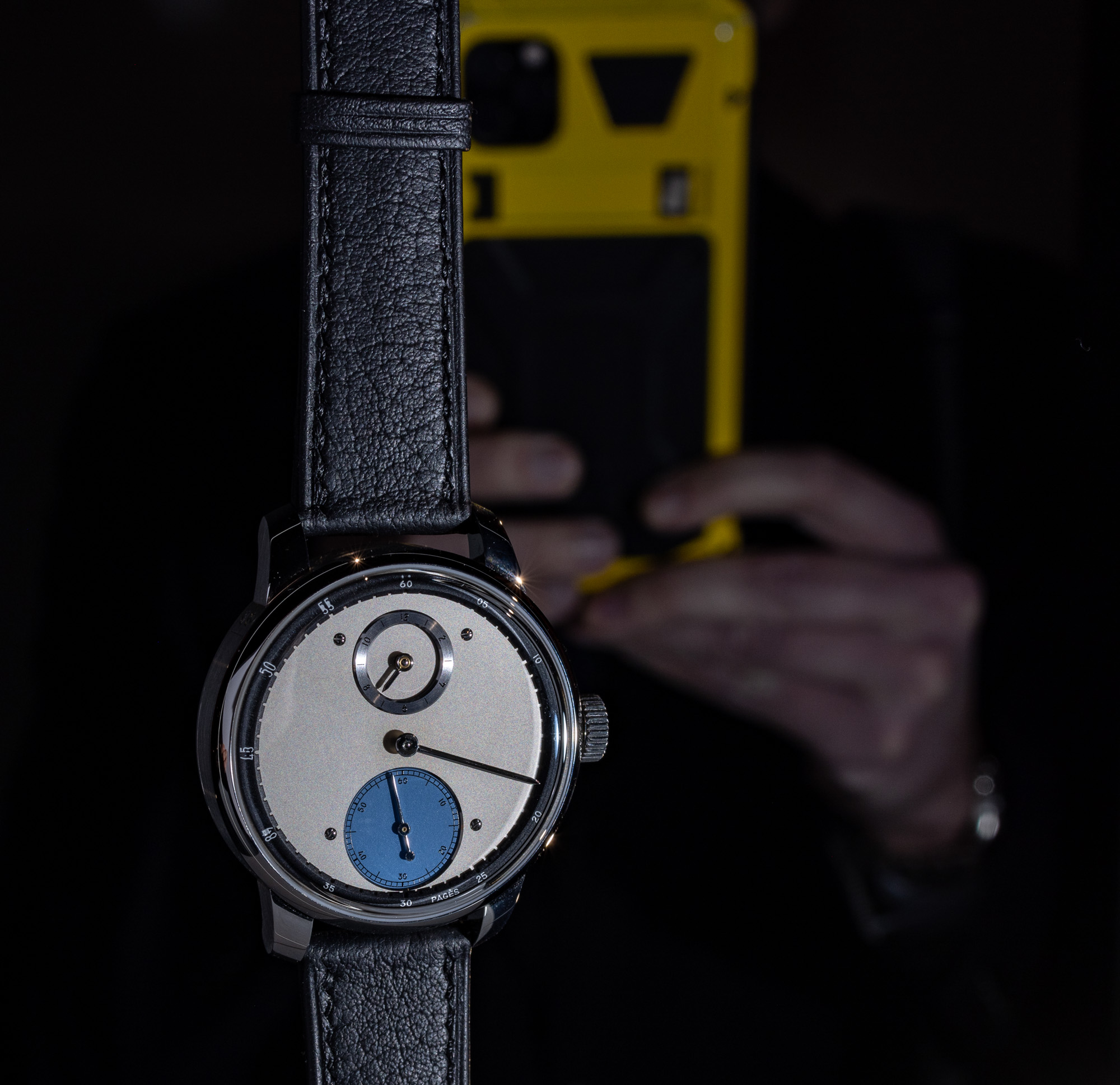

The award ceremony in Paris to announce the winner of the first Louis Vuitton Watch Prize was a real gala affair, with over 200 guests and a level of pomp and preparation that only a company like LVMH can arrange. The venue for the event was the company’s Frank Gehry-designed Louis Vuttion Fondation structure in Paris, with the timepiece submissions from each of the five finalists on display before the award ceremony itself. With no rubric for how such an event should play out, Louis Vuitton chose an interesting strategy for this seminal award show. It seemingly borrowed some of the sentiment of the Swiss-based Grand Prix d’Horlogerie de Geneve (GPHG) awards, for better or worse. In fact, many of the same people who are responsible for hosting the GPHG and selecting the winners were also called in for the Louis Vuitton Watch Prize. The good part of this is that it brought together some of the more important opinion leaders in the space. Louis Vuitton chose not to insert too many of its personalities aside from Jean Arnault into the event presentation and execution. Their goal was to benefit from as much industry involvement as possible, and that makes sense since the LV Watch Prize is something intended for the community as much as the brand. Elements of the Louis Vuitton Watch Prize ceremony devolved into a self-congratulatory session for those people who organized it. This was not by design but a natural outcome of people wanting to show appreciation for who they believed was the man of the hour, Jean Arnault. If there was a clear winner that night, it was him. The young leader of Louis Vuitton’s watch division and the child of the person who runs LVMH has a lot to be proud of, no doubt, and praise makes sense given the importance of his approval. Once the LV Watch Prize winner was chosen, the crowd descended upon Arnault to congratulate him.
What of Raul Pages and his elegant detent escapement-based regulator-style RP1 watch? As the Louis Vuitton Watch Prize winner, he is entitled to €150,000 Euros in cash, and the above-mentioned year of mentorship from Louis Vuitton and its La Fabrique du Temps watchmaking facility where the company has both manufacturing and artisan talent under one roof. While the gala event celebrating the LV Watch Prize winner felt like finality, it is, in fact, just the start. In my opinion, the real test for Louis Vuitton will be to make the mentorship satisfying and impactful. Louis Vuitton now has the pressure to create a program for Raul Pages that allows him to have something special to show about a year from now. That will require a lot of dedicated energy and maintenance of the current momentum, to keep Pages and the folks at La Fabrique du Temps focused on what currently has a still undefined goal. aBlogtoWatch will pay close attention to Page’s experience with La Fabrique du Temps and hopes to report interesting news about the outcome of the Louis Vuitton Watch Prize’s mentorship program as it develops.
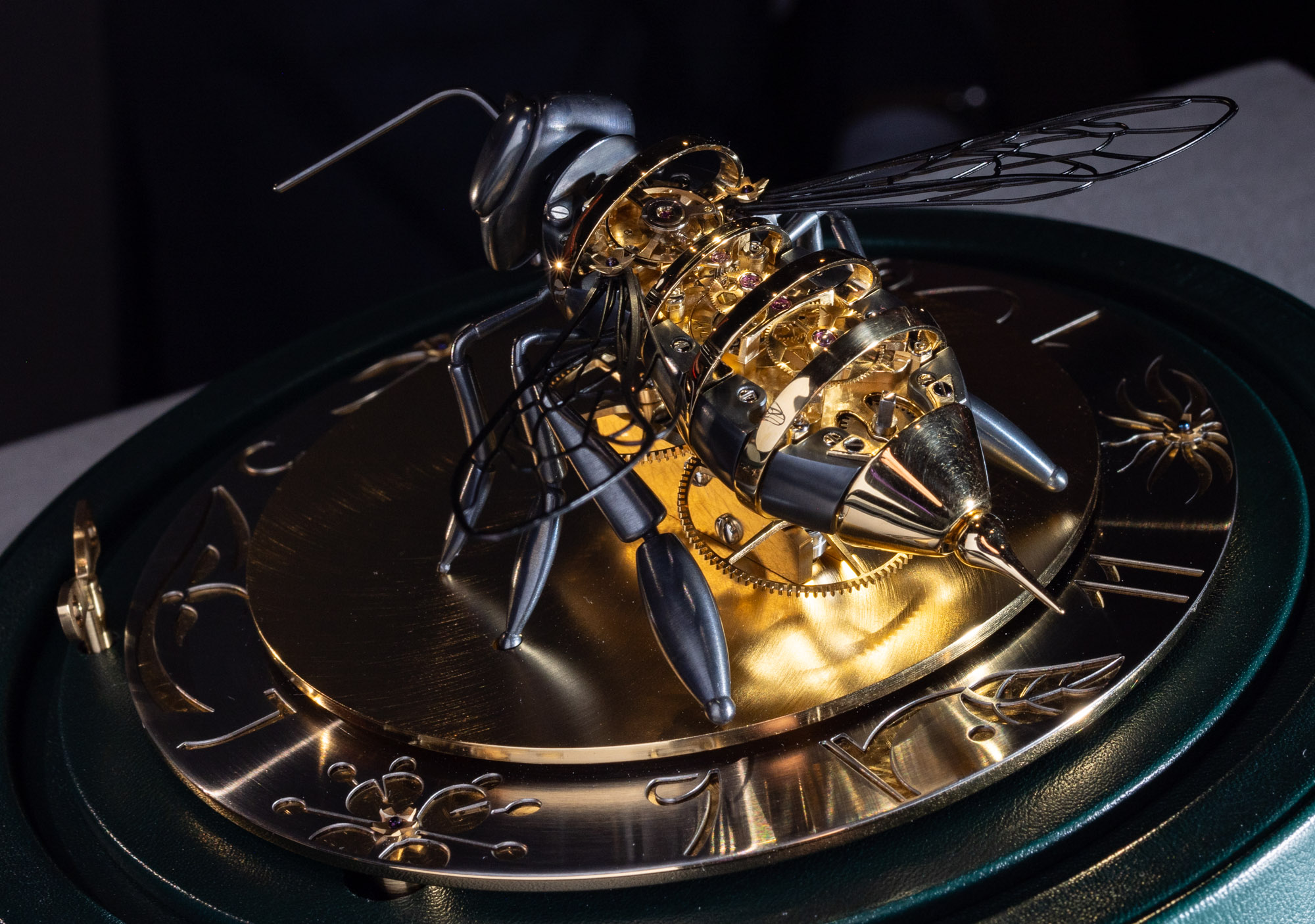
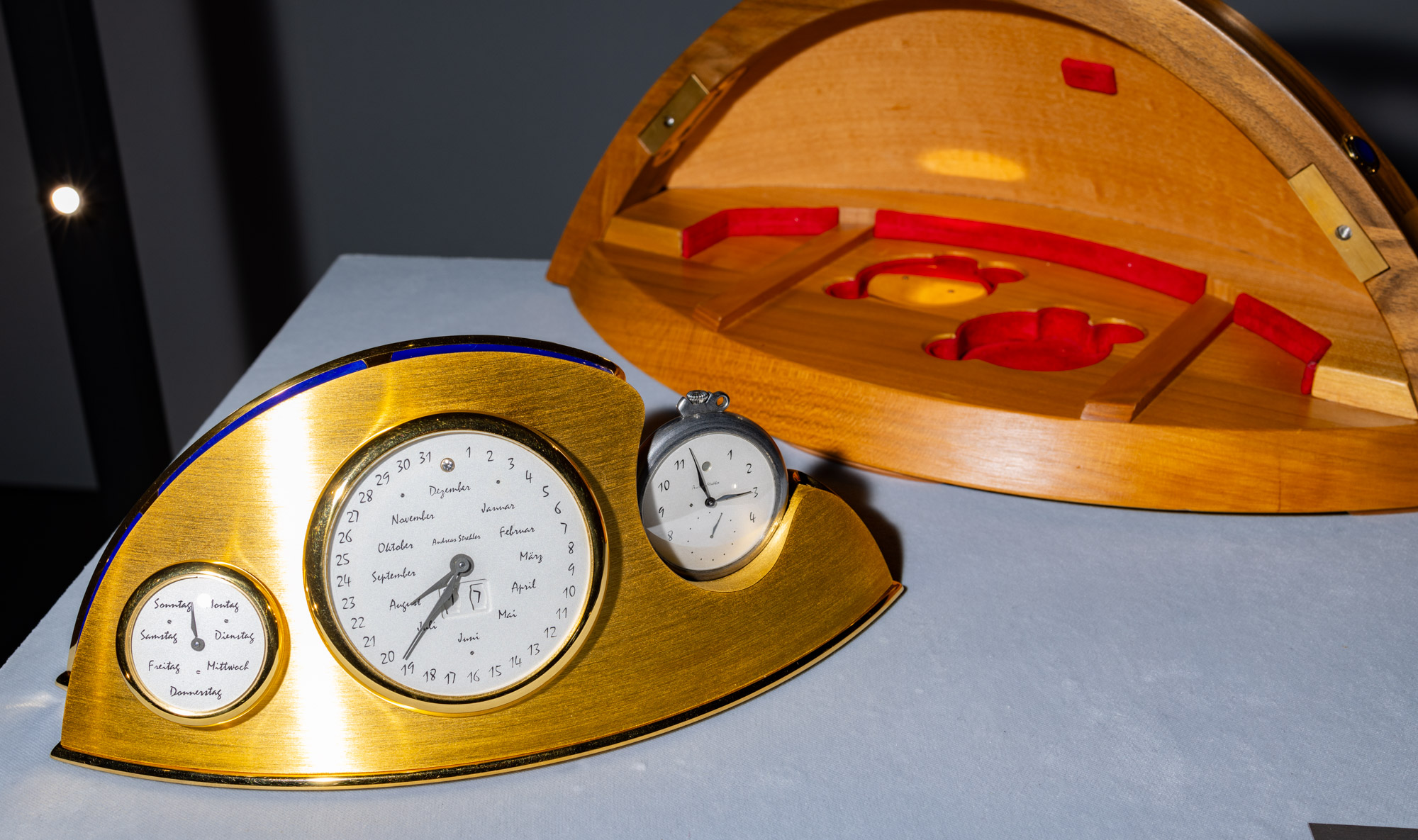
Louis Vuitton is really the big winner here. Part of its larger focus has been to get more people interested in and excited about the brand’s high-watchmaking programs and products. The company is moving away from lower-priced luxury timepieces with the plan of emphasizing higher-end, more artisanal timepieces. To be successful, it needs not only industry support but also expanded awareness among those people who purchase such products. Louis Vuitton, like sister brand Bulgari, has a bit of an uphill battle. Given Louis Vuitton’s primary focus on fashion and women’s goods, there is still a sentiment among many male watch enthusiasts that the company does not make products intended for them. This is false if you look at the timepiece products Louis Vuitton produces, but there is still a perception hurdle to continue overcoming. By getting opinion leaders from across the watch media industry to rally around Louis Vuitton and connect to its world of timepiece enthusiasm, the brand has moved considerably in the direction of gaining more approval from disparate parts of the timepiece industry. For its part, aBlogtoWatch has been covering Louis Vuitton’s watches with high levels of approval for years. Now others are taking fresh notice, in a process of “watch lover acceptance” that was quite similar to what Bulgari experienced starting about seven or eight years ago.
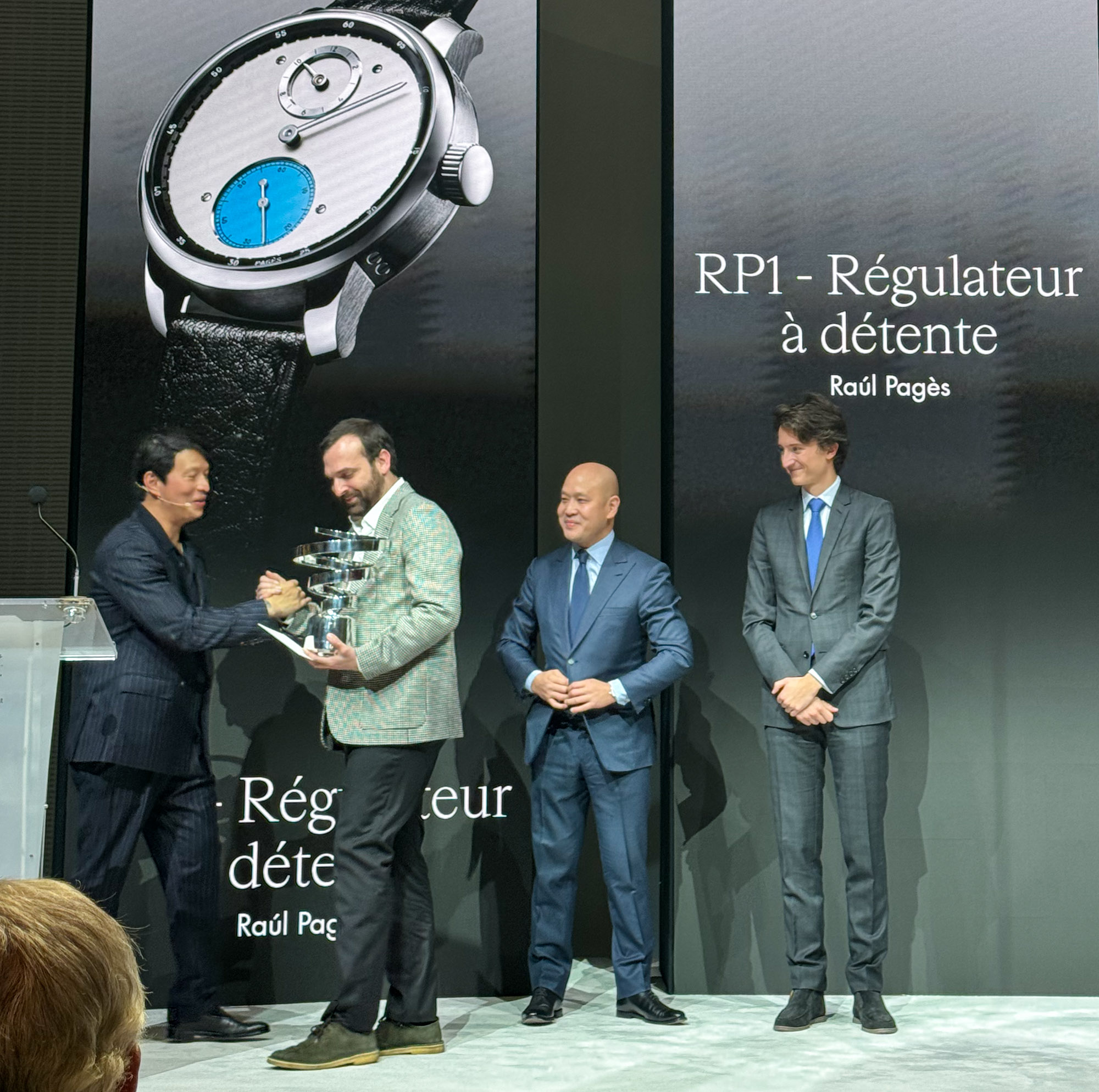
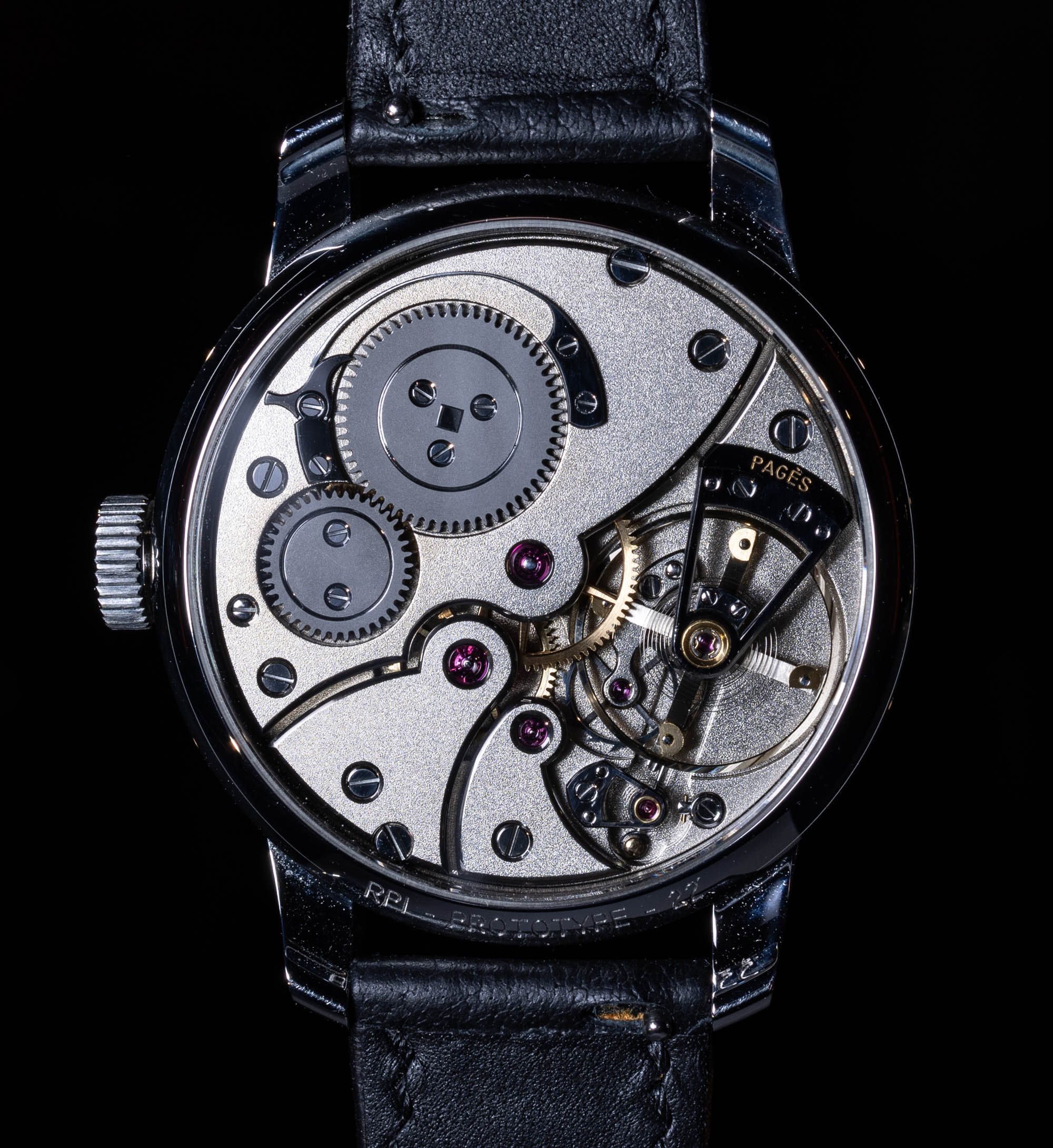
Raul Pages was moved to tears when winning the Louis Vuitton Watch Prize, and whether he won via merit or popularity (in reality, such prizes are awarded when considering a combination of both), choosing him as the winner of the first Louis Vuitton Watch Prize was a great start for the series. It is now up to Louis Vuttion’s watch division to make something of the experience and mentorship. At the end of the year, Pages and his brand should be in a materially better position professionally and commercially. To accomplish this, multiple minds and mentors at La Fabrique du Temps will need to guide and support him carefully. Arnault will be responsible for making sure that happens. The real results of the Louis Vuttion Watch Prize are still on the horizon, so stay tuned. Learn more about Louis Vuitton watches on the brand’s website.

